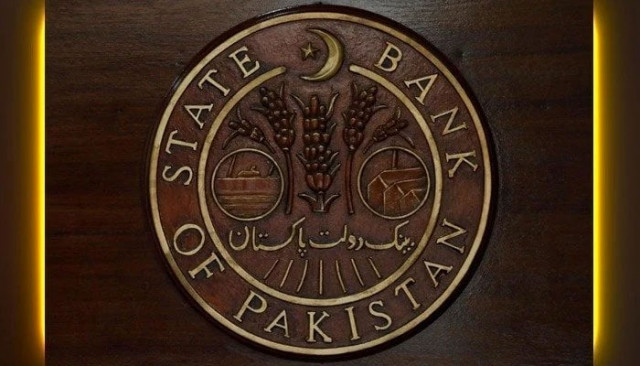Pros and cons of SBP autonomy
Besides managing inflation, central bank must generate growth, employment

The proposed legislation on the functioning of State Bank of Pakistan (SBP) being reported in the public press is extremely controversial.
There should be a debate, rather than railroading, on the pain of being unable to rejoin the International Monetary Fund’s (IMF) $6 billion Extended Fund Facility (EFF), which had been discontinued since April this year.
Consider the pros and cons, so even a banker can understand.
Advantage one: The autonomy of the SBP is good, much to be desired, for professional management of the economy.
Disadvantage one: Undoubtedly, but there are reports that this management of the economy is to be reduced from the classic dual function of generating growth and full employment, and managing inflation (in trade-off with the budget deficit) to just managing inflation.
The two functions are good and give the SBP a responsibility to balance growth against inflation. Jettisoning growth will make the SBP just the manager of inflation, with no responsibility or accountability for growth.
Disadvantage two: Why is the IMF insisting on this jettisoning of the responsibility for growth? Most advanced economies and developing countries give this mandate to their central banks.
The SBP controls monetary policy by setting the interest rate. This a major policy instrument to generate growth, especially at a time of crisis like the present growth crisis. Why are we tying one hand behind our back in combatting this crisis?
Christine Lagarde in her previous job running the IMF was lauding central banks’ use of monetary policy to generate growth under the financial crisis. Her successor still does.
Why then is the IMF pushing the SBP to abandon the use of monetary policy for growth in the present contraction in Pakistan?
Advantage two: Monetary policy should be used to manage inflation, which is even more threatening because of being close to double digits, which will hurt the poor far more than the rich.
So, the SBP will only use the interest rate to control inflation and adjust money supply to set the interest rate.
Disadvantage three: Raising the interest rate will kill off more investment and growth than the Ministry of Finance can generate through its incentive schemes.
Advantage three: Tighter autonomous control over money supply by the SBP, to control inflation, will also prevent the government from using the SBP to fund runaway expenditure.
It is very much desirable and laudable safeguard against politicians using government expenditure to finance their re-election, corruption and nepotism.
Disadvantage four: But if monetary policy can no longer be used to generate growth, then the government will have to use fiscal policy to generate growth, which will entail higher fiscal expenditures.
But wasn’t that what the new SBP mandate for just using monetary policy for controlling inflation was supposed to prevent in the first place?
Advantage four: Okay, we won’t get growth out of this new dispensation for the SBP, but we will jolly well control inflation.
Disadvantage five: Is the current inflation of 8% to 9% demand driven or supply driven?
It can’t be demand driven. With the current crisis, employment, incomes and demand are down. Then it’s supply driven with rising cost of production.
What’s raising the cost of production? Can’t be the wage rate, which is languishing with high unemployment and lockdowns.
Then what’s raising the cost of production is the depreciating exchange rate. With much of the energy imported, plus a lot of plant and equipment, the depreciation of the exchange rate has raised the cost of production, which has been passed on to consumers as inflation.
Advantage five: But we’ve finally got a market-determined exchange rate. This will prevent over-appreciation of the rupee. The big depreciation, we have seen as a result of the float under the IMF agreement, will fix the current account deficit. The depreciated exchange rate will raise exports and lower imports.
Disadvantage six: Last, we heard net exports, exports minus imports, generate growth. Surely, it’s not the SBP’s mandate for long, but just inflation.
So, the SBP’s new mandate is to manage inflation. And a major policy instrument to control inflation is the exchange rate. But currently the exchange rate is causing this inflation in the first place.
It will leave the hapless government trying to desperately control prices by fiat in bazaars, while its own autonomous central bank is causing this inflation in the first place.
Isn’t that really allowing the fox to guard the chicken coop.
Advantage six: I honestly believe, as does much of the country, that the present governor of the SBP is an honourable man and is extremely capable of handling his institutional autonomy. He needs to be protected from lawsuits that may interfere with his autonomy of decision-making.
A general policy caveat is that interest rate, prices and exchange rates are best fixed through coordination in as many markets for money, goods, and tradeables, respectively.
Policy for growth and prices has to be worked out simultaneously across the government and not by the compartmentalisation of functions between the Ministry of Finance and the SBP. It’s called general equilibrium. It’s time we learn it and cite the parable back to the IMF.
The writer is a PhD in Economics from the University of Sussex, UK and is currently working as a professor in the Department of Economics, Lahore School of Economics
Published in The Express Tribune, November 29th, 2021.
Like Business on Facebook, follow @TribuneBiz on Twitter to stay informed and join in the conversation.



















COMMENTS
Comments are moderated and generally will be posted if they are on-topic and not abusive.
For more information, please see our Comments FAQ